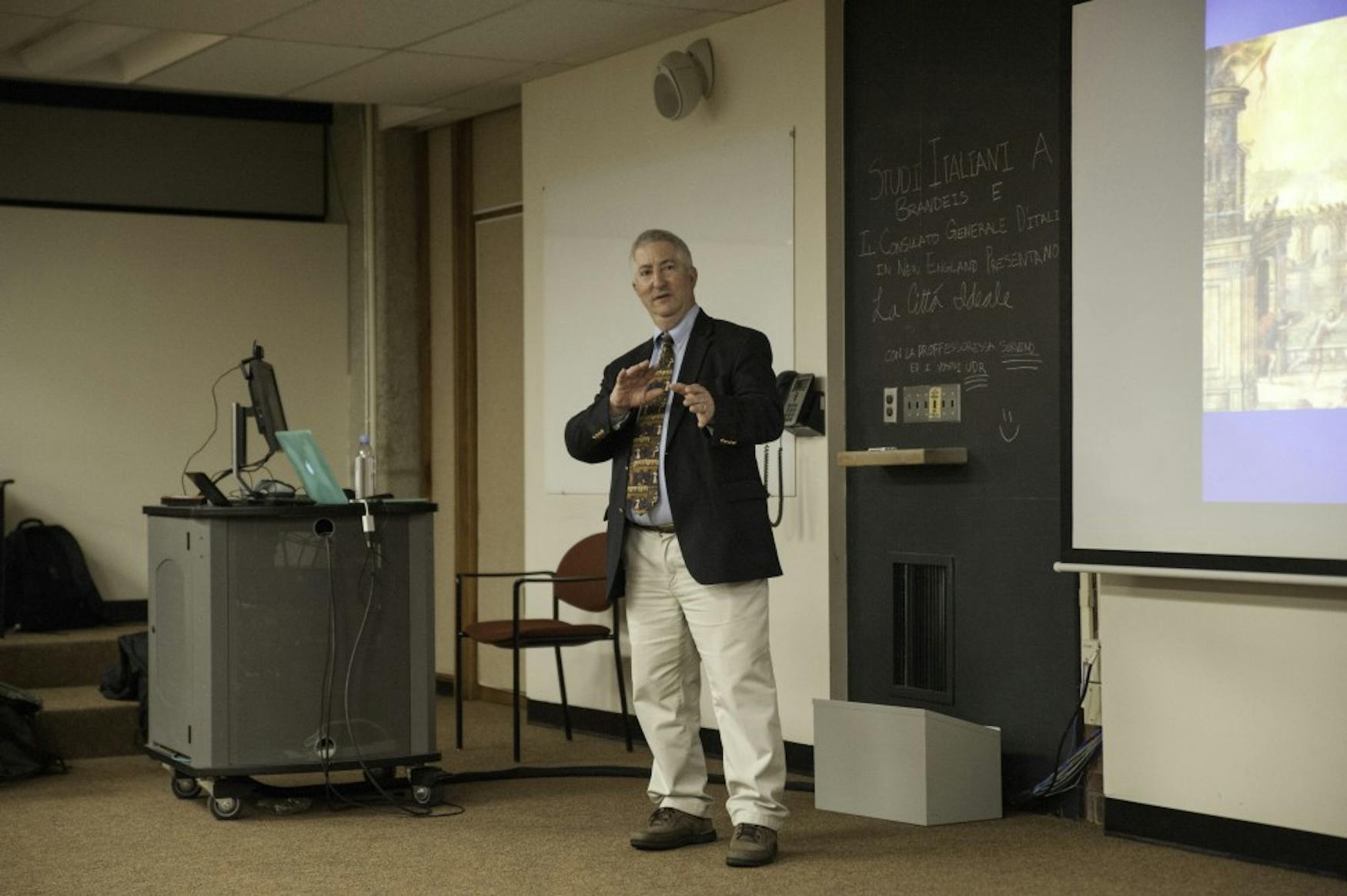Visiting scholar looks at the collapse of the Bronze Age civilizations
Granting modern relevance to the end of the Late Bronze Age in his lecture “1177 B.C. The Year Civilization Collapsed,” author and archaeologist Eric H. Cline explored on Wednesday the causes of the civilization collapses which defined that era and the lessons they hold for today.
Cline is a professor at George Washington University’s Department of Classics and Anthropology and acting director of the Capitol Archaeological Institute. The lecture was inspired by his book, published under the same name, in which he challenges the traditional explanation given for what he calls “the Collapse.”
From the 15th to 13th centuries B.C., the Hittites, Egyptians, Babylonians, Assyrians, Canaanites, Mycenaeans, Minoans and Cypriots all had flourishing, powerful civilizations in the Aegean and Eastern Mediterranean, according to Cline. These cultures were extremely interconnected, linked by prosperous trade routes, which Cline described as a “globalized world system.”
To put it another way, he said, using the modern names for the regions, “People from Italy on the west to Afghanistan on the east are trading with each other … Turkey down to Egypt.”
Around 1177 B.C., however, this world order came to a disastrous end. Every civilization collapsed, except for the Egyptians, who were so weakened they never recovered, according to Cline. This ended the Bronze Age, but what is fascinating for Cline about this moment in history is that there is no definitive explanation for why the civilizations fell.
Cline stressed the rarity of globalized world systems like this one throughout history because they emphasize the link between “them and us.” The Late Bronze Age and the modern era are two of only a small number of similar moments in history, according to Cline. “What happened to them, I think, should be of interest to more than just ancient historians. It should be of interest to absolutely everybody,” Cline said.
Currently, the accepted explanation for the Collapse is the “Sea Peoples,” a group of different cultures who conquered civilizations as they migrated from west to east. The name comes from an inscription at Medinet Habu, Egypt, in Ramses III’s mortuary temple, in which the pharaoh describes the Sea Peoples’ movement across the region.
The common theory of why the Sea Peoples left their homeland and how their migration caused the Collapse is “a nice logical, linear explanation,” Cline said.
It says that a drought in the Sea Peoples’ homelands led to a famine, which pushed the Sea Peoples to migrate, which cut pre-existing trade routes, destabilizing the different cultures and causing the Collapse.
However, you “have to admit that life is never that simple,” Cline said.
Looking for causes other than the Sea Peoples, other scholars have suggested droughts and famines, invaders, internal rebellions or earthquakes.
“If I had to choose between them,” Cline said, reflecting on all five theories at once, “I would say, ‘Yes.’”
According to Cline, each of these occurrences taken individually acts as a stressor on a civilization, but rarely will any one of them lead to an entire civilization’s collapse. Instead, Cline argues it is when all of these stressors act in tandem that a “perfect storm” is created, one powerful enough to destroy civilization after civilization.
Drawing on research and excavations done by other archaeologists, Cline has found proof of the other stressors.
Researchers examining coring samples of the soil have found evidence that droughts took place across this region during this time period. Inscriptions found at archaeological sites speak of famine. Ruins of archaeological sites suggest invasions or rebellions occurred, and uniquely warped walls provide evidence for earthquake activity.
Finally, Cline reimagines the Sea Peoples as a migration rather than an invasion, because entire families, not just warriors, were moving across the world. In his lecture, he likened the stress these migrations put on existing cultures to the Dust Bowl or the Syrian refugee crisis.
For Cline, examination of the way all these causes coalesced together to create the Collapse has implications far beyond the end of the Bronze Age. Cline noted that each of the stressors he explored in the lecture — drought, famine, earthquakes, rebellions, invasions and migrations — can be seen today.
The difference, for Cline, between the past and the present is that modern scientists and scholars have the capability to recognize these stressors. “We can do something about it,” Cline said.
The lecture was co-sponsored by the Brandeis Departments of Classical Studies, Near Eastern and Judaic Studies and History, the M.A. Program in Ancient Greek and Roman Studies and the Mandel Center for the Humanities.



Please note All comments are eligible for publication in The Justice.